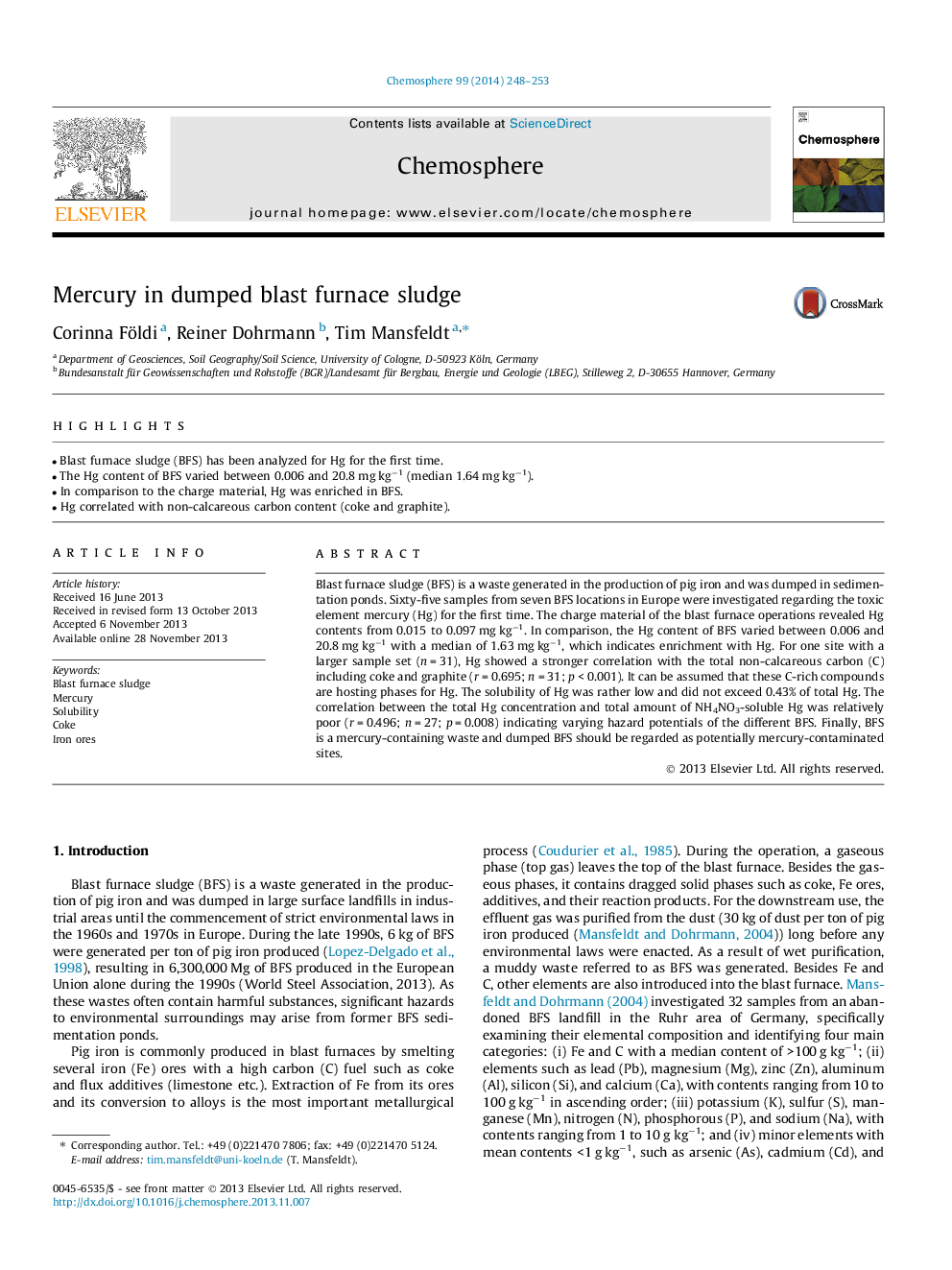| کد مقاله | کد نشریه | سال انتشار | مقاله انگلیسی | نسخه تمام متن |
|---|---|---|---|---|
| 4408950 | 1618872 | 2014 | 6 صفحه PDF | دانلود رایگان |
• Blast furnace sludge (BFS) has been analyzed for Hg for the first time.
• The Hg content of BFS varied between 0.006 and 20.8 mg kg−1 (median 1.64 mg kg−1).
• In comparison to the charge material, Hg was enriched in BFS.
• Hg correlated with non-calcareous carbon content (coke and graphite).
Blast furnace sludge (BFS) is a waste generated in the production of pig iron and was dumped in sedimentation ponds. Sixty-five samples from seven BFS locations in Europe were investigated regarding the toxic element mercury (Hg) for the first time. The charge material of the blast furnace operations revealed Hg contents from 0.015 to 0.097 mg kg−1. In comparison, the Hg content of BFS varied between 0.006 and 20.8 mg kg−1 with a median of 1.63 mg kg−1, which indicates enrichment with Hg. For one site with a larger sample set (n = 31), Hg showed a stronger correlation with the total non-calcareous carbon (C) including coke and graphite (r = 0.695; n = 31; p < 0.001). It can be assumed that these C-rich compounds are hosting phases for Hg. The solubility of Hg was rather low and did not exceed 0.43% of total Hg. The correlation between the total Hg concentration and total amount of NH4NO3-soluble Hg was relatively poor (r = 0.496; n = 27; p = 0.008) indicating varying hazard potentials of the different BFS. Finally, BFS is a mercury-containing waste and dumped BFS should be regarded as potentially mercury-contaminated sites.
Journal: Chemosphere - Volume 99, March 2014, Pages 248–253
